Well before Donald Trump and Joe Biden hit the stage for their first presidential debate, one of moderator Chris Wallace’s announced topics—race and violence in our cities—was already stirring angst. President Trump has repeatedly stereotyped Black-majority cities as “dangerous,” and “lawless,” often as a platform for racialized attacks on Democrats.
And sure enough, Trump’s angry temperament and unhinged rhetoric were on full display during his violent debate performance Tuesday night. When Wallace asked Trump to explicitly denounce white supremacist violence, Trump declined, and even instructed one such group to “stand back and stand by.” Later in the debate, Trump invoked the voter intimidation tactics of America’s segregated past, saying, “I am urging my supporters to go into the polls and watch very carefully.”
There is no debate: Trump is continuing a legacy of policy violence against Black Americans. And this policy violence creates degradation at a scale that the so-called “violence in our cities” could never match. Trump’s repeated claims that he’s done more for Black Americans than any president since Abraham Lincoln simply don’t hold up to the policy violence he has dispensed in his rhetoric and actions.
There is no debate: Trump is continuing a legacy of policy violence against Black Americans. And this policy violence creates degradation at a scale that the so-called “violence in our cities” could never match.
This June, during a White House briefing on the declining unemployment rate from the previous month, Trump said, “Nobody has ever done for the Black community what President Trump has done.” He has made similar statements in the past, particularly spotlighting the unemployment rate among Black workers, which fell as low 5.5% during his tenure. But during that June briefing, Trump put an exclamation point on the claim, invoking the name of George Floyd, whose death sparked nationwide protests against racist police violence. “George is looking down right now and saying this is a great thing that is happening for our country,” he said.
These comments illustrate how Trump clouds economic disparities, patently racist remarks, and regressive policy with macroeconomic statistics—many of which he should not take credit for. Trump’s policy decisions will more likely extract wealth from Black communities in the short and long term.
For instance, the median income for Black households in Minneapolis-St. Paul—where Floyd lived and died—was $38,200, less than half that of the $85,400 figure for white households, according to Census Bureau data. The metro area’s Black-white homeownership gap—46% to 79%—is wider even than the national gap of 51% to 75%. Meanwhile, Trump failed to mention the factors that contributed to Floyd’s death: Police stop Black people in Minneapolis at 2.46 times the rate proportional to their population, compared to .46 for white people. I doubt that Floyd would smile upon these statistics.
The Trump administration has said that they’re seeking to expand opportunity and prosperity for African Americans, specifically by creating a “better climate for minority-owned businesses.” But their actions speak differently: The signature COVID-19 economic relief program for businesses—the Paycheck Protection Program—did not prioritize underserved markets, which negatively impacted thousands of Black-owned firms. In April, the Center for Responsible Lending said that approximately 95% of Black-owned businesses were shut out of COVID-19 relief loans. Today’s economic crisis is also seeing higher unemployment rates for Black workers.
Trump’s handling of the COVID-19 pandemic didn’t do Black Americans any favors. Black people have contracted and died from COVID-19 at significantly higher rates, according to the Centers for Disease Control and Prevention.
Prior to the COVID-19 crisis, in 2017, Trump signed the Tax Cuts and Jobs Act. But according to the Center for Public Integrity, that law will actually increase taxes for American households making below $30,000. This will disproportionately impact Black people; almost 40% of Black households earn less than $30,000, compared to only 22% of white households.
Trump has also touted the Opportunity Zones program—which incentivizes investments in economically stressed communities—as a boon for African Americans. However, this initiative has mostly benefited the real estate industry by providing large tax cuts to build high-end developments for the wealthy, according to The New York Times.
In the realm of health care, Trump’s handling of the COVID-19 pandemic didn’t do Black Americans any favors. Black people have contracted and died from COVID-19 at significantly higher rates, according to the Centers for Disease Control and Prevention. Black, Latino or Hispanic, and Native American children account for nearly three out of four child deaths from COVID-19. Meanwhile, the administration is continuing to attempt to overturn the Affordable Care Act, which would reverse the shrinking insurance coverage gap between Black and white Americans that has occurred since the legislation’s inception and leave more people of color without health care.
At times, President Trump has even openly encouraged violence against Black people. Trump has heralded his legislation aiming to reduce sentencing disparities, but he has also encouraged police to not be “too nice” to suspects during arrests. Those police seem to be listening: George Floyd, Breonna Taylor, Stephon Clark, Rayshard Brooks, Daniel Prude, and Atatiana Jefferson are among those not alive today because of excessive force.
Four years ago, as the Republican nominee for president, Trump spoke at a rally in Dimondale, Mich. to a crowd that seemed to reflect the town’s population: 98% white. Still, Trump made a pitch for the Black vote: “You’re living in poverty, your schools are no good, you have no jobs, 58% of your youth is unemployed—what the hell do you have to lose?”
We now know the answer to that question. In Black-majority places in the U.S., there are 10,000 public schools, over 3 million businesses, and $609 billion in owner-occupied homes, according to my analysis. Trump’s fatalistic appeal mirrors a widely held view of Black communities that there is nothing of value there, which Trump has taken upon himself to reinforce in other Black-majority places.
Trump and other racist politicians have perpetuated the white supremacist myth that conditions of Black cities and neighborhoods are a direct result of the people in them. But simplistically framing violence as a function of individual choices sidesteps the policies that created conditions for crime. It also ignores the irresponsible and immoral policy choices—such as slavery, redlining, and stop-and-frisk—that created negative conditions and robbed generations of Black families of the opportunity to build wealth like their white counterparts
When it comes to violence in Black America, Trump should look to the real sources—which include his words and deeds.
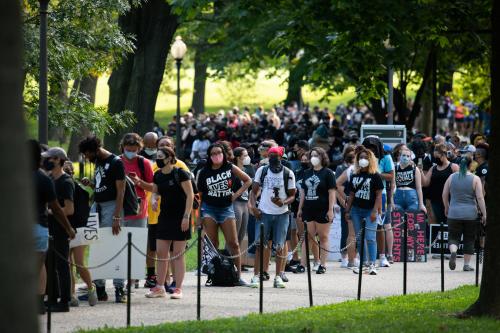
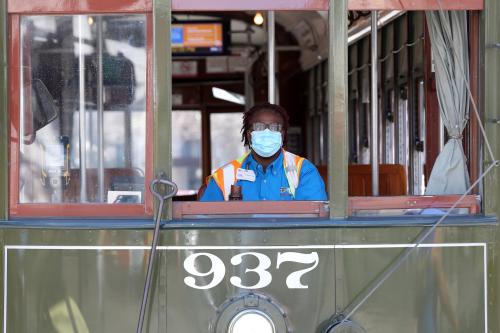
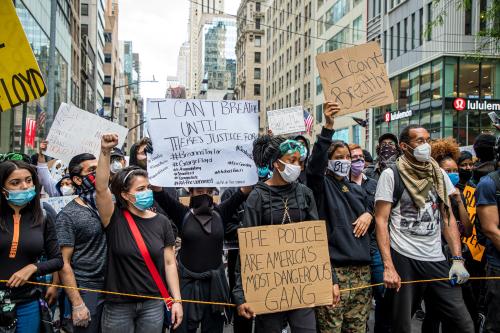
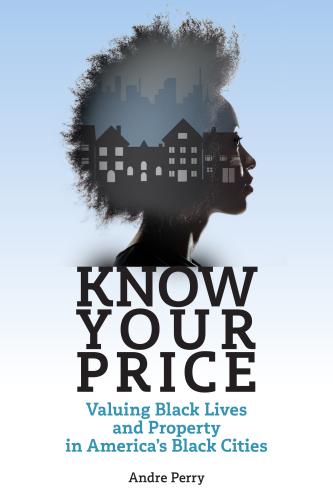


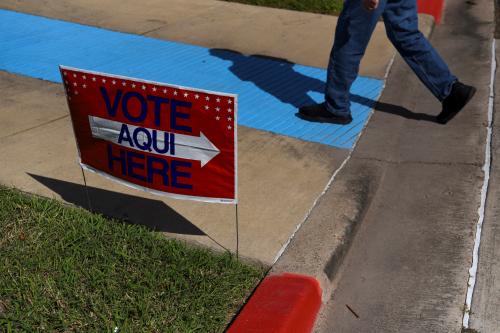
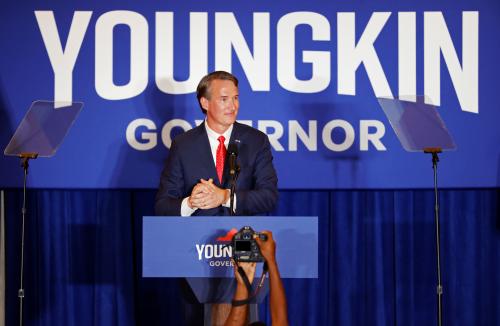
Commentary
Trump’s violent debate performance is a reflection of his racially violent policies
September 30, 2020